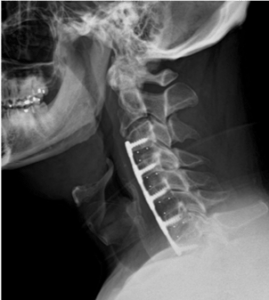Pharyngeal atrophy in the context of aging

Safe and efficient swallowing is something that most people take for granted. However, a disruption to swallowing function is not uncommon in the aging process and can have serious consequences for one’s health and quality-of-life. Studies suggest that the prevalence of swallowing disorders in older individuals ranges from 15-74%, depending on the population sampled and/or the metric used to define dysphagia. Sarcopenia is the age-related loss of skeletal muscle mass, organization, and strength and is a widely-cited explanation for age-related decline in swallow function. Our research has confirmed that age-related muscle loss occurs in the pharynx alongside an associated increase in pharyngeal lumen volume. We have also demonstrated that increased in pharyngeal volume negatively impacts swallowing biomechanics and function. Our lab is currently investigating methods to prevent pharyngeal sarcopenia and delay onset of age-related swallowing difficulties. Portions of this research has been funded by the following grants: NIH (R21DC01506), ASHA-AARC (2015), NYU Mega Grants fund, Steinhardt Research Challenge Grant.
Dysphagia after ACDF Surgery
 Anterior cervical discectomy and fusion (ACDF) is a surgical procedure to correct pain, weakness, or numbness associated with degenerative disc disease. Unfortunately, ACDF surgery places the muscles and the nerves of the throat at risk for damage and can result in impaired swallowing (‘dysphagia’). Dysphagia post-ACDF is either the result of a more short-term impairment caused by post-surgical edema or a more serious long-term impairment to the swallowing structures from the surgery itself. Timely evaluation by swallowing specialists can minimize negative outcomes. Unfortunately, neurosurgery teams lack effective post-surgical screening procedures to accurately identify which ACDF patients require an in-depth evaluation by a swallowing specialist. This gap exists because we do not have a feasible, non-invasive method for monitoring internal pharyngeal edema. Therefore, in an ongoing multidisciplinary collaboration with Dr. Matina Balou (SLP), Dr. Milan Amin (ENT), Dr. Aaron Johnson (SLP) and Dr. Anthony Frempong-Boadu (Neurosurgery), we are prospectively evaluating patients immediately before and again 6-weeks after their ACDF surgery. Our primary goal is to validate methods to reliably capture internal pharyngeal edema in ACDF patients. We also are exploring the impact of pharyngeal edema on the biomechanics of swallowing in this same group of patients using gold-standard swallowing assessments (videofluoroscopy). Read more about our project here. This research has been funded by CTSI Pilot Funds (NIH/NCATS UL1TR00144).
Anterior cervical discectomy and fusion (ACDF) is a surgical procedure to correct pain, weakness, or numbness associated with degenerative disc disease. Unfortunately, ACDF surgery places the muscles and the nerves of the throat at risk for damage and can result in impaired swallowing (‘dysphagia’). Dysphagia post-ACDF is either the result of a more short-term impairment caused by post-surgical edema or a more serious long-term impairment to the swallowing structures from the surgery itself. Timely evaluation by swallowing specialists can minimize negative outcomes. Unfortunately, neurosurgery teams lack effective post-surgical screening procedures to accurately identify which ACDF patients require an in-depth evaluation by a swallowing specialist. This gap exists because we do not have a feasible, non-invasive method for monitoring internal pharyngeal edema. Therefore, in an ongoing multidisciplinary collaboration with Dr. Matina Balou (SLP), Dr. Milan Amin (ENT), Dr. Aaron Johnson (SLP) and Dr. Anthony Frempong-Boadu (Neurosurgery), we are prospectively evaluating patients immediately before and again 6-weeks after their ACDF surgery. Our primary goal is to validate methods to reliably capture internal pharyngeal edema in ACDF patients. We also are exploring the impact of pharyngeal edema on the biomechanics of swallowing in this same group of patients using gold-standard swallowing assessments (videofluoroscopy). Read more about our project here. This research has been funded by CTSI Pilot Funds (NIH/NCATS UL1TR00144).